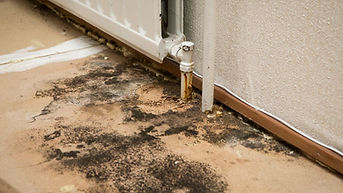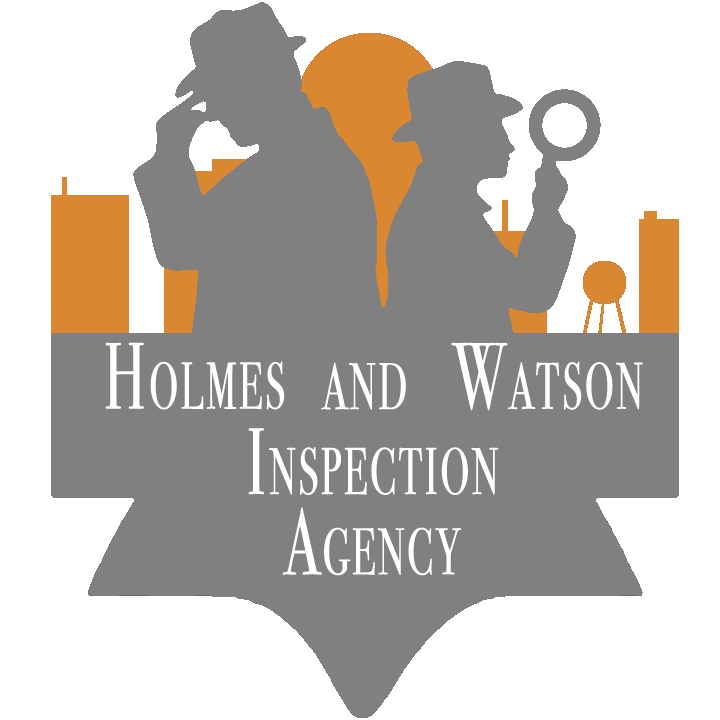

Mold Inspections & Testing - Winston Salem, NC


Protect Your Winston-Salem Home with Expert Mold Inspection and Testing Services:
Are you a homeowner in Winston-Salem, NC? Safeguard your home with our professional mold inspection and mold testing services. Our experienced team uses advanced tools and techniques to thoroughly assess your property, identifying mold growth and potential problem areas. We provide a detailed report outlining the type and extent of any mold found, ensuring you have a clear understanding of your home's condition.
During our comprehensive inspection, we examine both the interior and exterior of your home, focusing on walls, ceilings, floors, and other common mold-prone areas. Our experts also conduct air quality testing to detect airborne mold spores, offering a complete picture of your indoor environment.
Early mold detection is crucial for maintaining the structural integrity of your property. Addressing mold growth before it spreads helps prevent damage to building materials, saving you from costly repairs down the road. Additionally, identifying mold early can significantly reduce health risks, such as respiratory issues, allergies, and skin irritations caused by mold exposure.
Our mold inspection services contribute to a healthier indoor environment, improving your indoor air quality and creating a safe, comfortable space for you and your family. We also offer customized recommendations for mold remediation and removal based on your specific needs, helping you take proactive steps to eliminate mold from your home.
With our expert mold inspection and mold testing services in Winston-Salem, you can protect your home and family from the harmful effects of mold. Get peace of mind knowing your home is free from mold and moisture-related issues.
4o

.png)
COMPLETE MOLD INSPECTION: Winston Salem
The Inspector Will Perform:
-
a non-invasive visual examination of the readily accessible, visible, and installed systems and components of the building (listed in Section 4.0 Standards of Practice)
-
moisture, temperature and humidity measurements (refer to Section 4.8 Moisture, Humidity, and Temperature)
-
mold samples according to the IAC2 Mold Sampling Procedures (refer to Section 5.0 IAC2 Mold Sampling Procedures)
The Inspector Will Report:
-
moisture intrusion
-
water damage
-
musty odors
-
apparent mold growth
-
conditions conducive to mold growth
-
results of a laboratory analysis of all mold samplings taken at the building; and
-
any system or component listed in Section 4.0 Standards of Practice that were not inspected and the reason(s) they were not inspected.






STANDARDS OF PRACTICE: Winston Salem
The Indoor Air Quality Association (IAQA) created the Indoor Air Quality Certified® (IAQ-C) program, which includes the IAC2 certification for mold inspections. The IAC2 Standard of Practice (SOP) provides guidelines for mold inspectors to follow when conducting inspections.
-
The inspector must identify and report on any visible mold or conditions that could lead to mold growth.
-
The inspector must inspect the interior and exterior of the property, including the roof and any accessible crawl spaces, basements, and attics.
-
The inspector must use moisture meters and other equipment to identify areas of moisture intrusion, water damage, or high humidity.
-
The inspector must collect samples of mold for laboratory analysis if deemed necessary.
-
The inspector must provide a detailed written report outlining the findings, conclusions, and recommendations for remediation.
-
The inspector must not offer or perform any remediation services for mold.
-
The inspector must follow all applicable laws and regulations related to mold inspections.
In addition to the above, the IAC2 Mold Inspection SOP also requires the inspector to be knowledgeable in microbiology, building science, and environmental health. The inspector must also have a basic understanding of the principles of mold remediation and be able to recommend appropriate remediation procedures.
It's important to note that the IAC2 Mold Inspection SOP is not a comprehensive guide to mold inspection and remediation. Homeowners and property managers should consult with a certified mold inspector and licensed mold remediation professional if they suspect mold growth in their property.
We currently offer Home Inspections and Mold Inspections in the following North Carolina areas:
Currently offering Mold Inspections and testing to Winston Salem, NC and surrounding areas.

What is Mold?
Mold is a type of fungus that thrives in damp, humid environments. It reproduces through tiny spores that are carried through the air and can settle on various surfaces. Once mold spores find a moist area with a suitable food source, such as wood, drywall, or fabric, they can begin to grow and multiply rapidly. Molds are an essential part of the natural ecosystem, helping break down organic matter, but when they grow indoors, they can become a significant problem.
One of the major concerns with mold is its impact on indoor air quality (IAQ). Mold releases spores and microscopic particles into the air, which can be inhaled by the building's occupants. Prolonged exposure to mold spores can lead to a variety of health issues, especially for individuals with allergies, asthma, or other respiratory conditions. Symptoms of mold exposure may include coughing, wheezing, eye irritation, nasal congestion, and skin rashes. In severe cases, certain types of mold can even produce mycotoxins, which are toxic compounds that pose additional health risks.
Beyond its health impact, mold can also cause the degradation of building materials. Mold feeds on organic materials like wood, paper, and drywall, breaking them down over time. As it grows, mold can weaken the structural integrity of walls, ceilings, and floors, leading to costly damage if left untreated. Mold growth is particularly problematic in areas prone to moisture, such as basements, bathrooms, and attics. Excessive moisture from leaks, flooding, or poor ventilation creates the perfect environment for mold to thrive, making timely remediation essential to prevent further damage.
What is Black Mold?
Black mold is often a misunderstood term that causes concern for homeowners. Many people believe that "black mold" refers to a specific type of mold, but this is actually a misconception. In reality, black mold simply refers to mold that appears dark in color, and there are several different species of mold that can have this appearance. The most notorious mold often called black mold is Stachybotrys chartarum, but not all dark-colored molds belong to this species.
Molds come in many different colors, including black, green, white, or even orange, and these colors can vary depending on environmental factors. While Stachybotrys is often associated with health risks and severe indoor mold infestations, not all black-colored mold is inherently more dangerous than other molds.
A common misconception is that black mold is always toxic. In truth, the term "toxic mold" refers to molds that can produce mycotoxins, which are potentially harmful substances. Stachybotrys is one such mold that can produce mycotoxins under certain conditions, but not all black molds release these toxins. Additionally, even molds that are capable of producing mycotoxins do not always release them. Whether a mold is toxic or not depends on various factors.
It's important to note that many types of mold, not just black mold, can cause health issues, especially for those with allergies, asthma, or weakened immune systems. Symptoms of mold exposure may include coughing, wheezing, eye irritation, and skin rashes. For this reason, any visible mold growth in your home should be taken seriously and addressed promptly.
In summary, black mold is not a specific mold species but a general term used to describe molds that appear black or dark. While Stachybotrys chartarum is one species commonly linked to health risks, other dark molds may not be toxic. Regardless, all mold growth should be treated with care, and a professional mold inspection can help determine the best course of action for remediation.
Should You Get Your Winston Salem Home Tested For Mold?
Mold growth not only leads to structural damage to building materials but also significantly reduces indoor air quality, making it a health hazard. Exposure to mold spores, especially certain types like Stachybotrys chartarum (commonly referred to as black mold), can cause respiratory problems, allergic reactions, and other health issues, particularly for those with asthma, allergies, or compromised immune systems. Even mold that is not visibly apparent can spread through the air and impact indoor air quality. This makes mold inspections and IAQ testing crucial for identifying unseen dangers.
Both homeowners and renters should be aware that testing for mold and air quality is not just about finding visible mold—it involves analyzing the air and surfaces for mold spores and other contaminants that may not be immediately detectable. This is why it’s essential to hire a qualified inspector who is trained in IAQ testing and mold inspection. A qualified inspector will use specialized equipment to assess the condition of the home and ensure the testing is conducted thoroughly. Moreover, partnering with accredited laboratories to analyze samples is crucial. Certified labs provide reliable, accurate results, helping to create an actionable plan for addressing any mold or air quality issues.
By investing in professional IAQ and mold inspections, renters and homeowners in Winston-Salem can protect their health, maintain the integrity of their property, and avoid costly future repairs. Prioritizing these inspections, especially with a trusted professional, helps create a safe, comfortable, and healthy living environment.
Winston Salem Mold Problems. Get Your Home Tested.
Living in Winston-Salem, NC, presents several environmental and structural factors that can contribute to mold growth and poor indoor air quality (IAQ). One of the most significant contributors is the warm, humid climate typical of the region. High humidity levels, especially during the summer months, create ideal conditions for mold to thrive. When indoor spaces are not properly ventilated, moisture can build up on walls, ceilings, and other surfaces, leading to mold growth in areas such as bathrooms, basements, and kitchens. This excess moisture also contributes to a decline in air quality, as it facilitates the spread of mold spores and other airborne particles.
Another contributing factor is the prevalence of older homes in Winston-Salem. Many of these homes were built with materials and construction techniques that do not meet modern standards for energy efficiency and moisture control. Older homes often have poor insulation and ineffective weatherproofing, which allows moisture to seep into walls, attics, and crawl spaces. Inadequate ventilation in these spaces exacerbates the problem, trapping moisture and allowing mold to grow unnoticed until it becomes a significant issue.
Leaky roofs and outdated plumbing are also common in older homes, further contributing to water intrusion and mold growth. In addition, these issues may not always be immediately visible to homeowners or renters, meaning mold can grow undetected for long periods, negatively impacting both the structure of the home and the IAQ.
Finally, the presence of dense vegetation and heavy rainfall common in the region can increase humidity levels and water accumulation around homes, especially if drainage systems are inadequate. When water pools near the foundation or enters the home through cracks or gaps, it can create a breeding ground for mold.
In Winston-Salem, homeowners and renters must be vigilant in addressing moisture issues through regular maintenance and mold inspections to prevent poor IAQ and the degradation of building materials. Addressing these contributing factors early can help reduce the risks associated with mold growth and poor indoor air quality.
